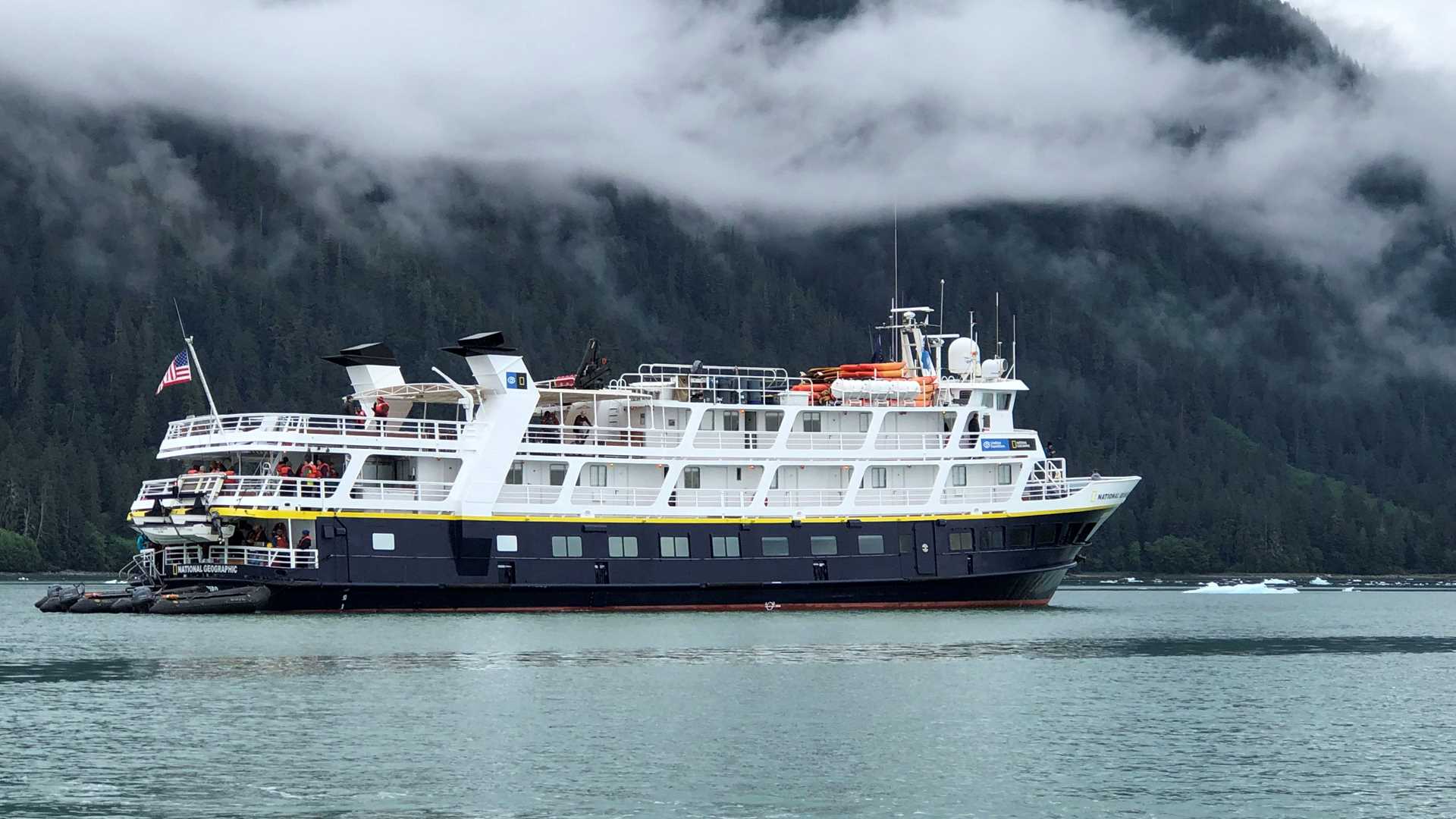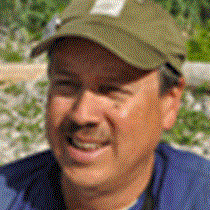On the first full day of our expedition, we awoke to beautiful Alaska-style scenery where clouds were lifting and sometimes exposing a steep forest-filled slope. The presence of nearby floating icebergs indicated that we were in the presence of a tidewater glacier, which is a glacier that calves directly into an arm of the sea. LeConte Bay, which holds the southernmost tidewater glacier in the Northern Hemisphere, was this morning’s destination.
The National Geographic Sea Bird hovered on the outside of the shallow terminal moraine that marks the furthest extent of LeConte Glacier about 1,500 years ago. The moraine is an accumulation of unsorted rock debris transported by the glacier and dumped at its terminus. We boarded inflatable boats to examine some icebergs close-up. The clear blue color of the ice made it look like a precious gem and many looked as if they had been sculptured at the hand of an expert ice-carver. There were sightings of several bald eagles that were flying above and even harbor seals that were peering at us from the sediment-filled water. The hot cocoa boat pulled up alongside our DIBs and provided us with a satisfying warm drink. We also noticed several small icebergs along the shore that had grounded themselves during the previous high tide. The abundance of icebergs here is an indication of the intense calving rate of LeConte Glacier, which is now actively retreating.
As we crossed Frederick Sound and approached Petersburg, a humpback whale was working its way along the shoreline looking for food. We were able to get very close to it and see its large bushy blow as we turned the corner into Wrangell Narrows, a narrow passage where there are over 60 numbered navigational aids for ships. As we transited the narrows, we saw many species of birds, including at least 30 bald eagles (with white tail feathers and head), as well as several immature eagles (with dark tail feathers and head) that were perched in trees or on the navigational markers themselves. There were also many small fishing boats traveling in the opposite direction, indicating that the fishing charter season is back.
Once we had successfully negotiated Wrangell Narrows, we searched for wildlife along the shore and in the icy waters. As the weather cleared and the sun slowly set, we took with us lasting memories of the outstanding scenic beauty of the area.







